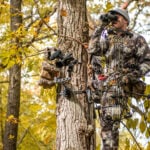“I’ve got a hunch what the deer are doing as they make their fall transition…I’m going to go for it.”
Those were my words as I stood around a bonfire with my hunting buddies talking about our plans for the morning’s hunt. Rekindling an old tradition, we all gathered for good conversation and some final target practice before the long-awaited opening day of archery season in Tennessee.
From virtually all accounts in our area, opening morning was slow. For me, it was no different. The wind just wasn’t right for me to hunt the area that I’d planned so I perched in a stand with a more favorable wind and large field of view. I had little intent of getting a shot until the evening hunt, but had hopes of seeing how the deer might be moving. Still, nothing.
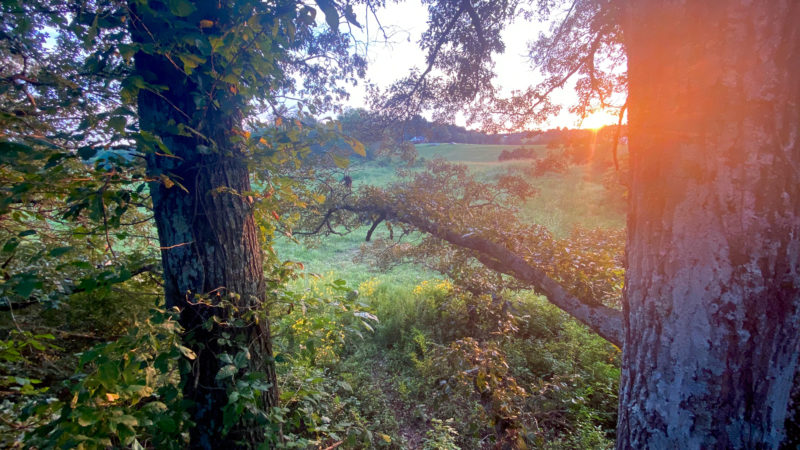
My new theory was proving true once again.
Last year, I was lucky enough to take a nice buck that I had been watching through the summer months. I had watched this buck as he fed in the beans a few hundred yards away. He showed himself like clockwork in a bachelor group in the early season, but disappeared once the season got started. I hunted the area hard during the velvet and archery season without a glimpse. On a hunch, I hunted the other side of the farm and caught the buck slipping from the timber into the field 60 yards away.
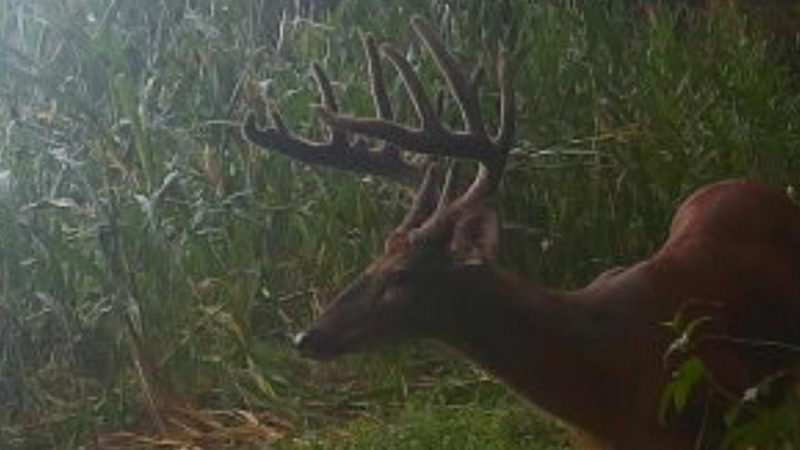
o, when I had the same scenario replay this year, it hit me. Like the year prior, I watched this group of bucks for almost a month during summer. And, like last year, the bigger bucks disappeared once the season cranked up.
But this year, I felt I had noticed something of value. With every sighting, they were slightly drifting a certain direction. I mean slightly! Every two to three days their feeding area would shift. I watched as they traversed three fields during that month, always in the same direction. They were shifting into their fall area.
I had no pictures, no visual sightings, and no solid sign to verify that they were in that area, but there was no doubt, that is exactly what was taking place. So on a recent hunt, with the wind in my favor, I climbed into the stand. My plan was to be ahead of the game and catch these migrating bucks as they transitioned south on the farm.
The hunt started with a handful of does filtering through. Then, a hundred yards directly in front of me, I spotted a deer head in the bean field. Right in front of me stood one of my top bucks. He shook the rain off a bit and looked around. I grabbed my rangefinder. He was 99 yards. I turned to put the rangefinder down, picked the binos back up, and…nothing. I scanned frantically. Where did he go? There was no way I’d lost him!
“He’s laying in those beans!” I said to myself.
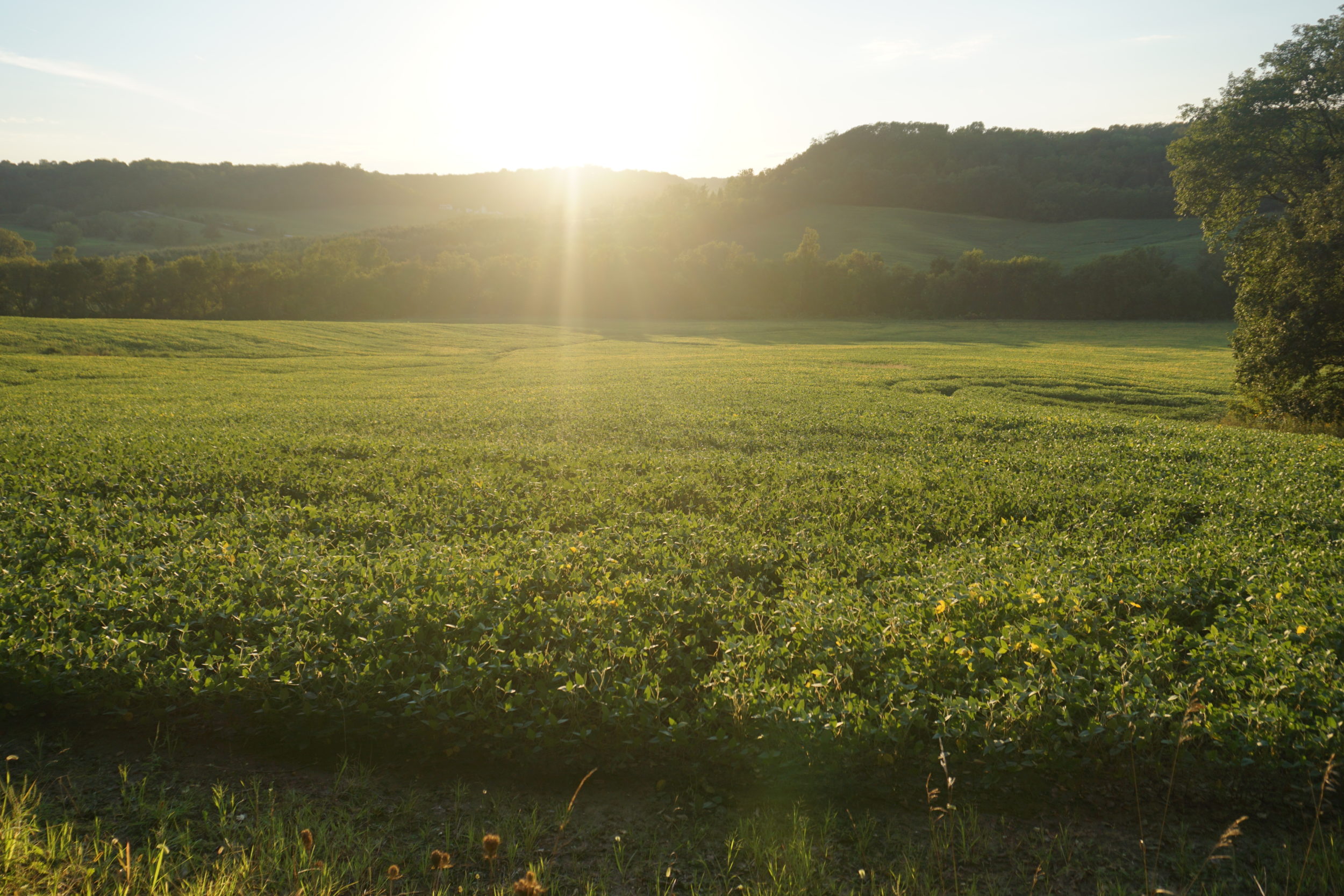
Then, about twenty minutes later, he stood up in the exact same spot. He had staged in the beans for the afternoon. With this realization came another. I had walked right by him on the way in. He had the perfect vantage point; tall cover that doubled as a food source with a 360-degree view. It had given us both the perfect combination of concealment and observation.
He stayed in the same spot for what felt like forever. Looking all around, he moved at a snail’s pace. Going from 99 yards to 81 yards in thirty minutes time, my inner pessimist began to plot my next move. Certain he would never get in range, I watched intently, contemplating on how to close in on him during the coming hunts.
The next time I ranged him, he was at 66 yards. “He will not come any closer,” I thought to myself.
But he was coming.
The buck fever that had set in faded. It was game time. All the hours, seasons, and years, all reduced to a matter of seconds.
I ranged him again – 42 yards.
Hoping the deer that had gathered around me (some under 15 yards) didn’t spook, I set my rover pin at 45 yards, drew back, and let the arrow fly.
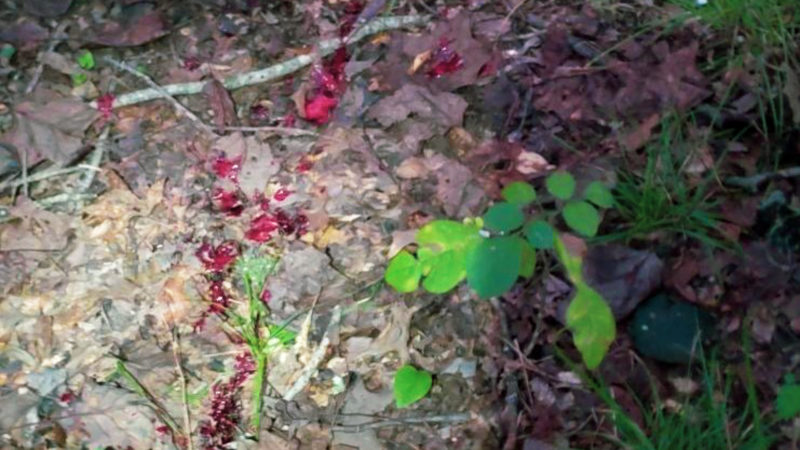
The buck immediately j-hooked and trotted in a three quarter circle right into the woods, never looking back. All of the other deer remained in the field as I slid down into my seat to catch my breath and recheck the range. Point of impact was 46 yards. I was glad I went with the 45-yard pin. I sat for one of the longest forty-five-minute stints of my life and climbed down just before dark.
When I got to where he was standing, I found what every hunter hopes for after a shot – good blood! I went to where I saw him enter the woods to find the same. All signs showed that he couldn’t have gone far, but to be safe, I backed out to retrieve the ATV and give him a little more time.
When I returned with my crew, we found the buck just inside the woods. He had barely cleared the field.
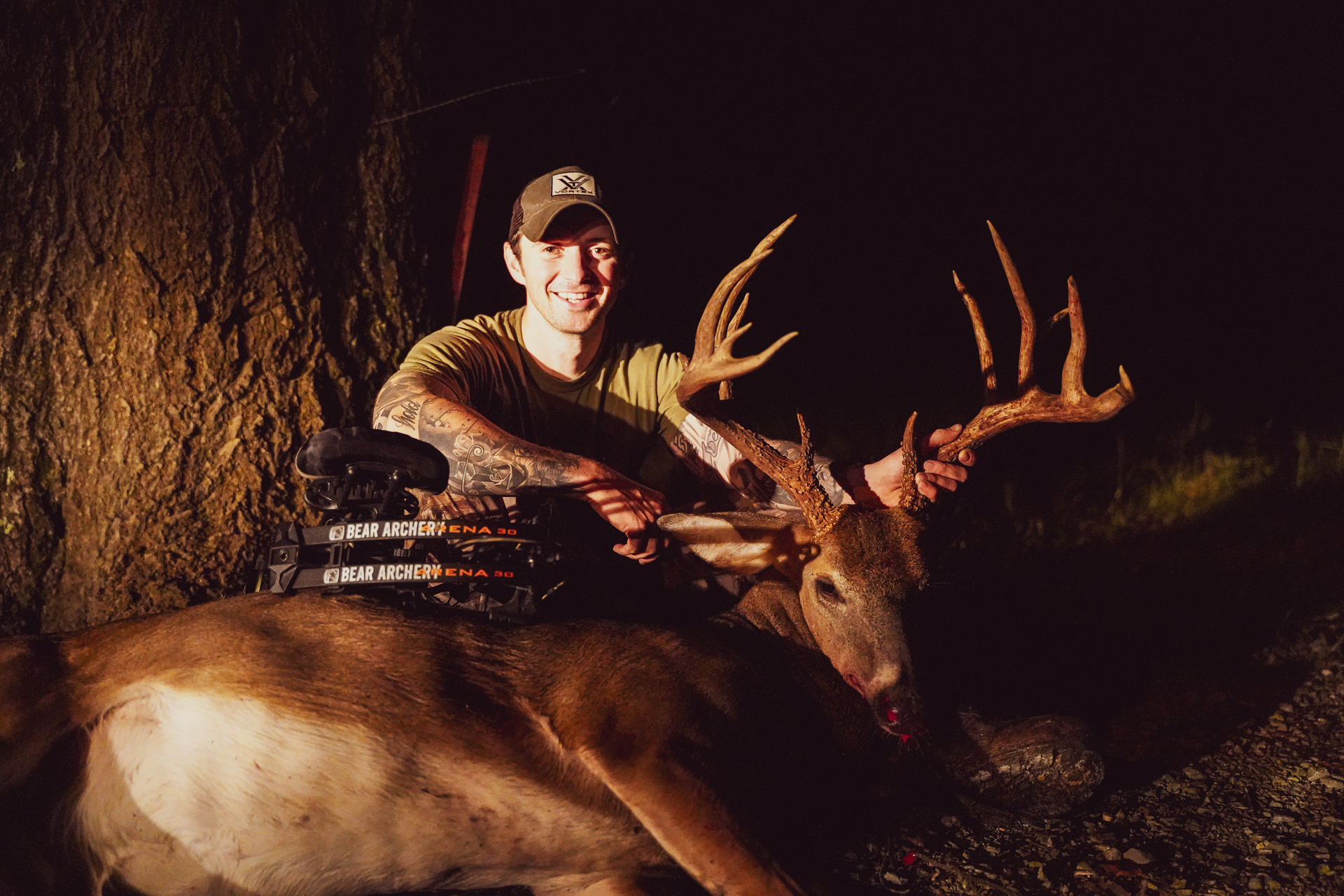
I’ve been hunting my entire life, but I’m still noticing the subtleties that help improve my success as a hunter. I knew deer would make the rounds and shift from various properties throughout the year. But what I had failed to notice was the subtle feeding transitions within a buck’s smaller home range that kept him in or out of bow range of my treestands.
I was glad to see the pieces coming together and finally figuring out the puzzle when it comes to bowhunting deer on fall transitions.
Quick Tips for Hunting Fall Transitions
- Watch for the subtle shift taking place in feeding patterns. You’ll often miss it, or think nothing of it, but in both Ag fields, as well as acorns in the timber, deer will have a slight shift in their patterns across your property.
- Not all nuts are created equal. Just because you find acorns on the ground doesn’t mean you have found the deer. Deer will prefer to feed in one spot more than others. It may be security, cover, visibility, or others. Figure out what they prefer and watch as they transition from one to the other.
- The author discovered his deer “migrating” south across his farm as they made the fall transition. How do they shift on your place? You need to know to maximize opportunity.
- Don’t fall for the myth that just because your target buck is not on your trail camera that he’s left the farm. He’s likely still there. Just making the fall shift across your property. Make some moves with your trail cams to pick him back up.

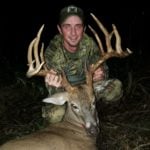 By
By 

